- News
- Reviews
- Bikes
- Accessories
- Accessories - misc
- Computer mounts
- Bags
- Bar ends
- Bike bags & cases
- Bottle cages
- Bottles
- Cameras
- Car racks
- Child seats
- Computers
- Glasses
- GPS units
- Helmets
- Lights - front
- Lights - rear
- Lights - sets
- Locks
- Mirrors
- Mudguards
- Racks
- Pumps & CO2 inflators
- Puncture kits
- Reflectives
- Smart watches
- Stands and racks
- Trailers
- Clothing
- Components
- Bar tape & grips
- Bottom brackets
- Brake & gear cables
- Brake & STI levers
- Brake pads & spares
- Brakes
- Cassettes & freewheels
- Chains
- Chainsets & chainrings
- Derailleurs - front
- Derailleurs - rear
- Forks
- Gear levers & shifters
- Groupsets
- Handlebars & extensions
- Headsets
- Hubs
- Inner tubes
- Pedals
- Quick releases & skewers
- Saddles
- Seatposts
- Stems
- Wheels
- Tyres
- Health, fitness and nutrition
- Tools and workshop
- Miscellaneous
- Cross country mountain bikes
- Tubeless valves
- Buyers Guides
- Features
- Forum
- Recommends
- Podcast
review
£1,750.00
VERDICT:
Disc brake equipped aluminium road bike that offers a great ride at a competitive price
Weight:
9,160g
Contact:
At road.cc every product is thoroughly tested for as long as it takes to get a proper insight into how well it works. Our reviewers are experienced cyclists that we trust to be objective. While we strive to ensure that opinions expressed are backed up by facts, reviews are by their nature an informed opinion, not a definitive verdict. We don't intentionally try to break anything (except locks) but we do try to look for weak points in any design. The overall score is not just an average of the other scores: it reflects both a product's function and value – with value determined by how a product compares with items of similar spec, quality, and price.
What the road.cc scores meanGood scores are more common than bad, because fortunately good products are more common than bad.
- Exceptional
- Excellent
- Very Good
- Good
- Quite good
- Average
- Not so good
- Poor
- Bad
- Appalling
The Trek Emonda ALR 5 Disc is an aluminium road bike that offers a great ride and good value. Equipped with a Shimano 105 groupset, including hydraulic disc brakes, it's a lot of bike for your money.
- Pros: Great ride quality, Shimano 105 hydraulic disc brakes
- Cons: Some won't want aluminium frame or H2 fit
Despite Trek wanting to talk about how light and responsive its Emonda bikes are, the standout quality of the ALR 5 Disc is the ride quality. This is one of those bikes that's never flustered. It handles rough roads without any drama – which is just as well because there are plenty of 'em round our way – and stays fully planted on sketchy corners.
> Find your nearest dealer here
You'll still get people telling you that an aluminium frame is harsh, you're going to get beaten up in the saddle, and all the rest of it. Forget all that. This bike is in no way uncomfortable, even if you're riding for several hours at a stretch. Okay, it doesn't mollycoddle you but there's a good amount of damping via the skinny, bridge-less seatstays and the arcing top tube means that you'll almost certainly have a lot of the slim (27.2mm diameter) seatpost extending out of the frame, allowing some flex over any bumps that come your way.
If anything, Bontrager's Montrose Comp saddle is a little too soft and flexible for my taste, especially through the cutaway central section – when it comes to squidginess, I'd prefer a scoop less – but as ever with saddles, that comes down to a matter of taste.
If you want more comfort you can always swap the Bontrager R1 Hard-Case Lite 25mm tyres for 28s – there's easily enough clearance from the frame and fork.
The disc brake-specific Bontrager Affinity rims are tubeless-ready if you wanted to run lower pressures for a more cosseted feel, although the tyres aren't tubeless so they'd need changing.
Full 105 groupset
The Emonda ALR 5 Disc comes equipped with a full Shimano 105 groupset and it performs exactly as you'd want it to. As you probably know, 105 is Shimano's third tier road groupset, and it's hard to beat in terms of value. It just works really, really well. I've been riding this bike every day for several weeks and the only tweak I've had to make is the usual turn of the rear derailleur barrel adjuster to sort out the indexing after a few rides.
I won't go into every aspect of 105's performance here, but the shifting is reliable, the hydraulic disc brakes are superb whatever the conditions, and the shape of the dual control levers is almost as good as that of the mechanical/rim brake version, with just a small bulge where the hose exits. That's positioned in such a way that it's unlikely you'll ever feel it.
Some people might quibble with the choice of compact 50/34-tooth chainsets throughout the Emonda range (unless you go for a Project One version of a carbon fibre Emonda, in which case you can spec what you like), but you could always ask the dealer if they'd be kind enough to swap over to standard chainrings if you'd prefer (it would be down to the discretion of the individual dealer).
All round, 105 is lovely stuff, only really suffering in comparison to more expensive Ultegra and Dura-Ace when it comes to weight.
Frame and weight
I don't like to go on about weight too much because it really isn't as big a deal as some people would have you believe, but Trek markets the Emonda as its lightweight road bike – as opposed to the Madone that's designed for aerodynamics and the Domane that's designed for comfort and endurance – so we need to cover it.
Trek hydroforms the aluminium tubing – the process of injecting fluid into a cylindrical frame tube and stretching it to its capacity. This allows complex shapes to be formed in order to tune the ride and keep the weight low. Trek also says that hydroforming allows it to produce tubes that fit together perfectly, reducing the amount of weld material. This, it says, allows for larger continuous surface areas on the frame, which increases strength and cuts weight.
Trek claims that the rim brake version of the Emonda ALR frame weighs 1,112g (56cm model) while the disc brake version is just 19g heavier at 1,131g. Of course, when you factor in the brakes themselves (the callipers, rotors, shifters, hoses and brake fluid), the weight difference is greater, our complete 58cm Emonda ALR Disc bike coming in at 9.16kg (20lb 3oz).
That's a fair chunk heavier than the rim brake Trek Emonda ALR 6 we reviewed last year. That bike, equipped with a Shimano Ultegra groupset – a level higher than the 105 on the Emonda ALR 5 Disc – was 7.89kg. We're not comparing apples with apples there; disc brake bikes are always heavier than rim brake bikes of a similar (ish) standard.
Does 1.27kg (under 3lb) make any difference out on the road? Not much. The bike feels a little less chuckable and physics says that accelerating and climbing is slightly dulled, but we're talking about marginal differences. All other things being equal, you'd rather have the lighter weight, but all other things aren't equal – the flip side is that you're getting the added performance of disc brakes. It's up to you if you think it's worth it, of course.
Geometry
All of the Emonda ALR bikes are built to Trek's H2 geometry, which is a little less low and stretched than its H1 or H1.5 setups but still focused on speed. If you want an Emonda in anything other than an H2 fit, you need to go through its Project One customisation system (the carbon fibre Emonda SLR 6 is the cheapest option, currently priced from £3,450). Trek is really dedicated to H2 these days and I guess it knows what its customers want.
"It's the perfect fit for most road riders because it's not overly aggressive but still puts you in the right position for power," says Trek.
To put some figures on it, we have the 58cm frame here with a 53.3cm seat tube, 57.3cm effective top tube, 19cm head tube and 73.8-degree head and 73-degree seat angles. The stack is 596mm and the reach is 391mm (giving a stack/reach ratio of 1.52).
For comparison, Trek's Madone SLR Disc in an H1.5 fit has a stack of 581mm and a reach of 396mm (giving a stack/reach of 1.47). Don't get the wrong idea, the riding position isn't nearly as upright as that of an endurance bike. Trek's Domane ALR Disc frame, for example, has a higher stack (611mm on the 58cm model) and a shorter reach (380mm on the 58cm model). The stack/reach ratio on the 58cm model is 1.61.
In other words, the H2 geometry splits the difference between an aggressive road bike and an endurance bike, and that's how it feels when you're in the saddle.
If you're used to a traditional race setup there's the possibility that you'll find the H2 geometry a bit too upright. I was happy with the position once I'd shifted the stem as low as it could go on the steerer, but we're all different. I did find myself down on the drops in search of efficiency a little more than normal, but that's not a bad thing. A lot of people buy a super-aggressive road bike, slam the stem and then never move their hands off the hoods, which kind of defeats the purpose.
Rivals
Of the bikes that we've reviewed on road.cc recently, the £1,400 Pearson Allmodcons is vaguely similar to the Trek Emonda ALR 5 Disc in that it is built around an aluminium frame and has a Shimano 105-based spec, although one big difference is the use of TRP Spyre C cable-operated disc brakes.
As the name suggests, the Merlin Cordite 105 R7000 Disc Carbon is equipped with a Shimano 105 groupset too, although here you get a carbon fibre frame. That bike is discounted from £1,850 to £1,279 and Merlin tells us that it's a permanent reduction.
> Buyer's Guide: 16 of 2019’s hottest disc brake-equipped race bikes
The Trek does compare well with other big brand offerings. It's £50 more at rrp than Cannondale's aluminium CAAD12 Disc 105 at £1,700, while Specialized's Allez Sprint Comp Disc, which also comes with an aluminium frame and a Shimano 105 groupset, is more expensive at £1,900. BMC's Teammachine ALR Disc One is also £1,900, with an aluminium frame, carbon fork and Shimano 105 groupset including hydro disc brakes. And while Bianchi doesn't do an equivalent road bike, its Impulso Allroad also has an aluminium frame, carbon fork and 105 groupset, including hydro disc brakes, for £1,900.
Giant's Contend SL 1 Disc looks good value at £1,249. We reviewed the rim brake version last year. Bear in mind, though, that the fork is carbon/aluminium rather than full carbon and although most of the groupset is Shimano 105, the chainset is a downgrade. The disc brakes are Giant's Conducts which use a cable-actuated master cylinder rather than being a full hydraulic setup.
There isn't a carbon fibre Trek Emonda SL 5 Disc in the range, the closest carbon equivalent being the Emonda SL 6 Disc with an upgrade to a Shimano Ultegra groupset and Bontrager's Paradigm Disc wheels. This model is £2,700.
Conclusion
The Emonda ALR 5 Disc is one of those bikes that manages to be greater than the sum of its parts. Check out the spec sheet and everything says that it should be solid, but the ride quality is comfortably above that. If you're expecting a harsh ride you're in for a lovely surprise here.
Verdict
Disc brake equipped aluminium road bike that offers a great ride at a competitive price
road.cc test report
Make and model: Trek Emonda ALR 5 Disc
Size tested: 58cm
About the bike
List the components used to build up the bike.
Trek lists:
Frame Ultralight 300 Series Alpha Aluminium, Invisible Weld Technology, tapered head tube, BB86.5, flat mount disc brakes, 12mm thru-axle, internal cable routing, DuoTrap S compatible
Fork Emonda carbon disc, carbon tapered steerer, flat-mount disc brakes, 12 mm thru-axle
Front hub Bontrager alloy sealed bearing, 12 mm thru-axle
Rear hub Bontrager alloy sealed bearing, 12 mm thru-axle
Rims Bontrager Affinity Tubeless Ready Disc
Tyres Bontrager R1 Hard-Case Lite, 700x 25c
Max tyre size 28 c Bontrager tyres (with at least 4 mm of clearance to frame)
Shifters Shimano 105, 11-speed
Front derailleur Shimano 105, braze-on
Rear derailleur Shimano 105
Crank Shimano 105, 50/34 (compact)
Bottom bracket Press Fit BB86.5
Cassette Shimano 105, 11-28, 11-speed
Chain Shimano 105
Pedals Not included
Saddle Bontrager Montrose Comp, chromoly rails
Seatpost Bontrager carbon, 2-bolt head, 27.2 mm, 8 mm offset
Handlebar Bontrager Comp VR-C, 31.8 mm
Grips Bontrager tape
Stem Bontrager Elite, 31.8 mm, 7-degree, w/computer and light mounts
Headset Integrated, cartridge bearing, sealed, 1-1/8in top, 1.5in bottom
Brakeset Shimano 105 flat-mount hydraulic disc
Tell us what the bike is for and who it's aimed at. What do the manufacturers say about it? How does that compare to your own feelings about the bike?
Trek says, "Emonda ALR 5 Disc is a light and responsive road bike with an advanced alloy frame that gives it the sleek looks and handling of a far more expensive carbon bike. Paired with big upgrades on parts, like a dependable Shimano 105 drivetrain and powerful hydraulic disc brakes that stop in any weather, this bike is built to perform on club rides and races alike."
Where does this model sit in the range? Tell us briefly about the cheaper options and the more expensive options
The Emonda ALR is available with either direct-mount rim brakes or disc brakes. Here's the range:
* Emonda ALR 4 (rim brake), Shimano Tiagra, £1,200
* Emonda ALR 4 Disc, Shimano Tiagra, £1,400
* Emonda ALR 5 (rim brake), Shimano 105, £1,350
* Emonda ALR 5 Disc, Shimano 105, £1,750
* Emonda ALR (rim brake) frameset, £800
* Emonda ALR Disc frameset, £800
In other words, this is the top level Trek Emonda ALR. There's then a whole range of carbon-fibre Emondas with prices starting at £1,800.
Frame and fork
Overall rating for frame and fork
8/10
Tell us about the build quality and finish of the frame and fork?
The build quality is high. The frame incorporates what Trek calls Invisible Weld Technology which it claims is "revolutionary weld technology [that] creates a better connection with each tube junction, increasing strength while using less material".
You can't see most of the welds unless you go looking for them.
Tell us about the materials used in the frame and fork?
The frame is made from what Trek calls 'Ultralight 300 Series Alpha Aluminium'.
The fork is carbon, including the tapered steerer.
Tell us about the geometry of the frame and fork?
All of the off-the-peg Emondas (as opposed to the Project One models that you can customise) are built to Trek's H2 geometry. This sits somewhere between a traditional race geometry and an endurance geometry.
How was the bike in terms of height and reach? How did it compare to other bikes of the same stated size?
As billed, the H2 geometry is a little more relaxed than a traditional-style race geometry.
Trek says, "It's the perfect fit for most road riders because it's not overly aggressive but still puts you in the right position for power."
It'll work for most people, although if you're used to a very aggressive setup there's a chance you'll find the front end a little high.
Riding the bike
Was the bike comfortable to ride? Tell us how you felt about the ride quality.
Trek doesn't shout about it but this bike is surprisingly comfortable.
Did the bike feel stiff in the right places? Did any part of the bike feel too stiff or too flexible?
The frame has a claimed weight of 1,131g, which is light for a disc brake aluminium frame, but there are no issues with flex.
How did the bike transfer power? Did it feel efficient?
It feels stiff and efficient.
Was there any toe-clip overlap with the front wheel? If so was it a problem?
A little, but not a worry.
How would you describe the steering? Was it lively neutral or unresponsive? The lively side of neutral.
Tell us some more about the handling. How did the bike feel overall? Did it do particular things well or badly?
The bike feels assured in use. It handles imperfect road surfaces well without transferring too much buzz up to you.
Which components had the most effect (good or bad) on the bike's comfort? would you recommend any changes?
The shifters feel as good as Shimano's 105 mechanical shifters, with just a slight bulge where the hose exits. Because of the positioning of that exit point, you probably won't feel it in use.
Bontrager's own Montrose Comp saddle is a touch too soft for my taste thanks to a generous amount of padding and quite a flexible shell. Of course, some people will love it for those same features – that's the way with saddles!
Rate the bike for efficiency of power transfer:
8/10
Rate the bike for acceleration:
8/10
Rate the bike for sprinting:
9/10
Rate the bike for high speed stability:
8/10
Rate the bike for cruising speed stability:
8/10
Rate the bike for low speed stability:
8/10
Rate the bike for flat cornering:
8/10
Rate the bike for cornering on descents:
8/10
Rate the bike for climbing:
8/10
The drivetrain
Rate the drivetrain for performance:
9/10
Rate the drivetrain for durability:
8/10
Rate the drivetrain for weight:
8/10
Rate the drivetrain for value:
7/10
Tell us some more about the drivetrain. Anything you particularly did or didn't like? Any components which didn't work well together?
I'd imagine most people will like the compact (50/34-tooth) chainset although it would be nice if Trek offered standard options in the Emonda range without the need to use the Project One custom programme.
Wheels and tyres
Rate the wheels for performance:
8/10
Rate the wheels for durability:
8/10
Rate the wheels for weight:
7/10
Rate the wheels for comfort:
8/10
Rate the wheels for value:
8/10
Tell us some more about the wheels.Did they work well in the conditions you encountered? Would you change the wheels? If so what for?
The Bontrager Affinity rims are disc brake-specific while the hubs use sealed bearings with 12mm thru-axles front and rear, which has become the norm for disc brake road bikes.
The wheels have stayed perfectly true throughout testing - no need for any little tweaks with the spoke key.
In the longterm, I'd swap them for something lighter or, rather, I'd keep these for everyday use and have some lighter wheels ready and waiting for special occasions.
Rate the tyres for performance:
8/10
Rate the tyres for durability:
8/10
Rate the tyres for weight:
6/10
Rate the tyres for comfort:
8/10
Rate the tyres for value:
8/10
Tell us some more about the tyres. Did they work well in the conditions you encountered? Would you change the tyres? If so what for?
The Bontrager R1 Hard-Case Lite tyres aren't particularly light but I've found them to offer a decent balance between grip and durability and you get reasonable puncture resistance.
Controls
Rate the controls for performance:
9/10
Rate the controls for durability:
9/10
Rate the controls for weight:
8/10
Rate the controls for comfort:
9/10
Rate the controls for value:
9/10
Tell us some more about the controls. Any particularly good or bad components? How would the controls work for larger or smaller riders?
Shimano 105 dual controls are among the best out there at a reasonable price.
Anything else you want to say about the componentry? Comment on any other components (good or bad)
Apart from the Shimano 105 groupset, everything is from Trek's Bontrager brand. That's not a bad thing; it's all good stuff.
Your summary
Did you enjoy riding the bike? Yes
Would you consider buying the bike? Yes
Would you recommend the bike to a friend? Yes
How does the price compare to that of similar bikes in the market, including ones recently tested on road.cc?
The Merlin Cordite 105 R7000 Disc Carbon is equipped with a Shimano 105 groupset. You get a carbon fibre frame here. That bike is discounted from £1,850 to £1,279.
Cannondale's aluminium CAAD12 Disc 105 is £1,700 while Specialized's Allez Sprint Comp Disc (which also comes with an aluminium frame and a Shimano 105 groupset), is £1,900.
Giant's Contend SL 1 Disc is £1,249. It has an aluminium frame and 105 groupset but the chainset is a downgrade and the disc brakes are Giant's Conducts which use a cable-actuated master cylinder rather than being a full hydraulic setup. The fork is carbon/aluminium rather than full carbon too.
Rate the bike overall for performance:
8/10
Rate the bike overall for value:
7/10
Use this box to explain your overall score
A very good performance and solid value make this an easy 8.
About the tester
Age: 48
I usually ride: My best bike is:
I've been riding for: Over 20 years I ride: Most days I would class myself as: Expert
I regularly do the following types of riding: commuting, club rides, sportives, general fitness riding
Mat has been in cycling media since 1996, on titles including BikeRadar, Total Bike, Total Mountain Bike, What Mountain Bike and Mountain Biking UK, and he has been editor of 220 Triathlon and Cycling Plus. Mat has been road.cc technical editor for over a decade, testing bikes, fettling the latest kit, and trying out the most up-to-the-minute clothing. He has won his category in Ironman UK 70.3 and finished on the podium in both marathons he has run. Mat is a Cambridge graduate who did a post-grad in magazine journalism, and he is a winner of the Cycling Media Award for Specialist Online Writer. Now over 50, he's riding road and gravel bikes most days for fun and fitness rather than training for competitions.
Latest Comments
- Rian_constant 2 sec ago
short sighted by some grumpy locals. Cycling tourism leaves incredible amounts of money with very little environmental impact compared to e.g....
- OnYerBike 2 hours 3 min ago
I've no idea what the situation is here, but I've seen plenty of "under construction" cycle lanes where there are only signs/barriers around the...
- Pub bike 2 hours 5 min ago
I see - Nokon avoids the problem of radial or longitudinal wires altogether using short solid segments that are non-compressible.
- the little onion 2 hours 10 min ago
whereas the whole point is that they didn't hit you this time
- Tom_77 2 hours 24 min ago
AIUI an entering-circulating accident [sic] would be when the vehicle entering the roundabout fails to give way to the vehicle circulating.
- chrisonabike 2 hours 42 min ago
Which is great - but you can only take a bus which exists eg. is going somewhere near where you want to go, when you want to go....
- mdavidford 4 hours 34 min ago
Erm, does someone need counting lessons?
- Willem1 4 hours 45 min ago
My cannondale SuperSix gen3 frameset i recently bougth has a sticker saying: made in China. Dont know about the newest models.
- SimoninSpalding 5 hours 29 min ago
Cos style, and did you not read it only weighs 158g!...
- chrisonabike 5 hours 55 min ago
It's strange - some folks who grew up there say it was a great community and has declined. Some folks say it was "like Beiruit" and has calmed down...






















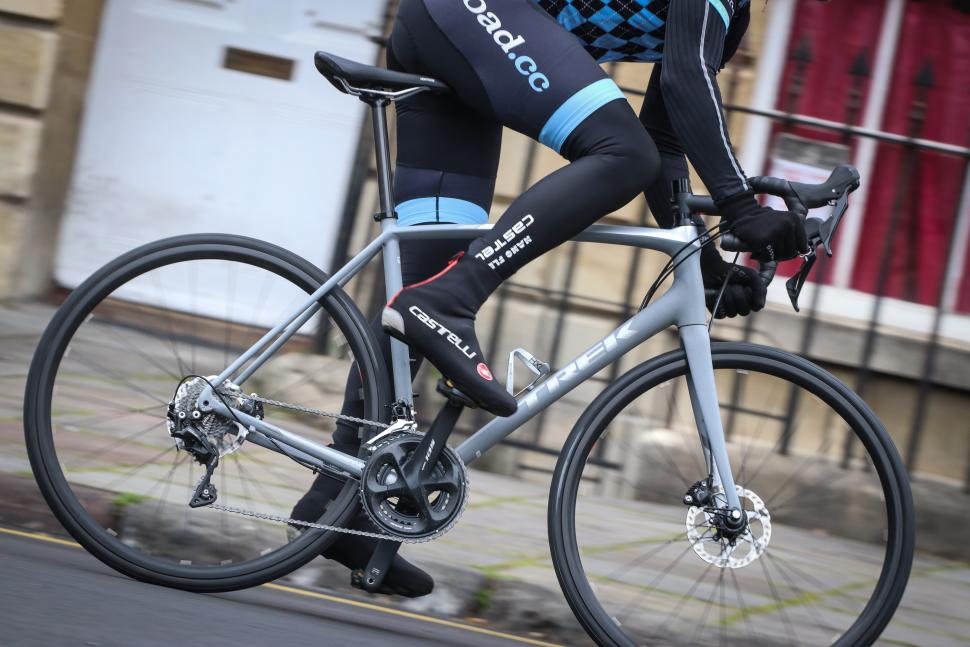


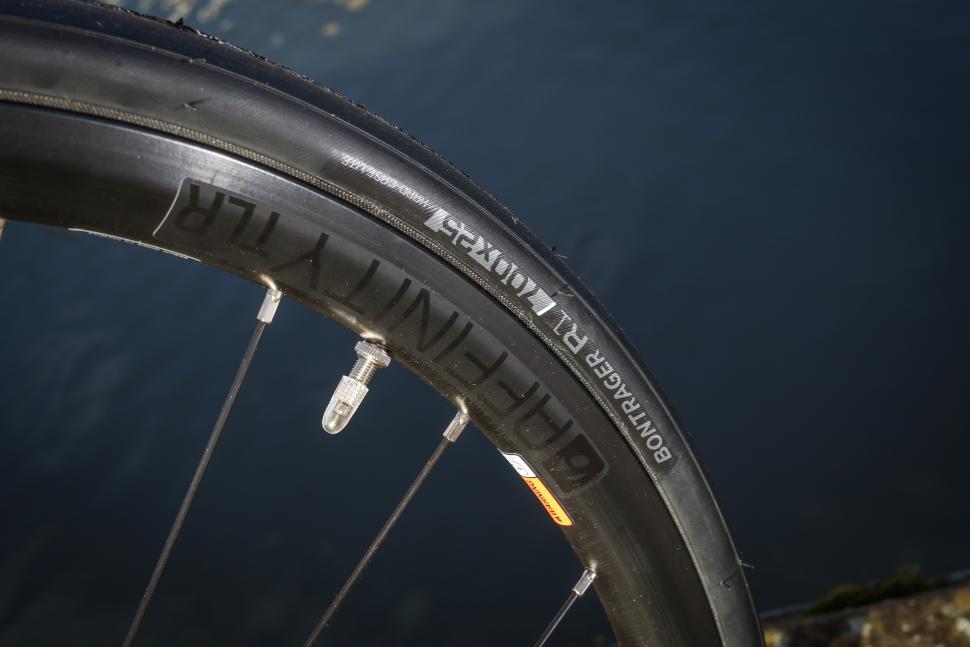

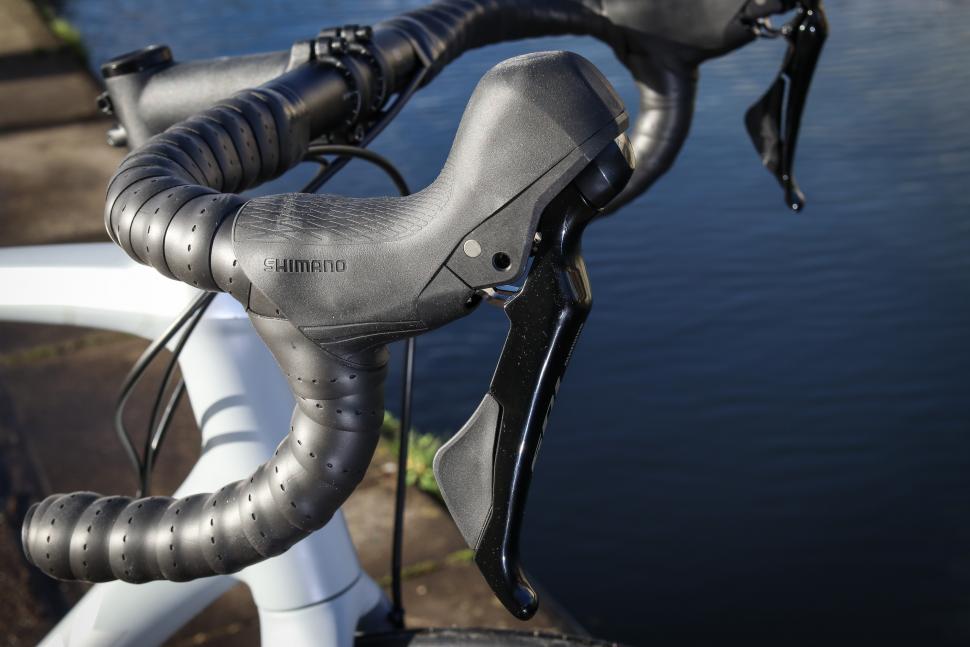
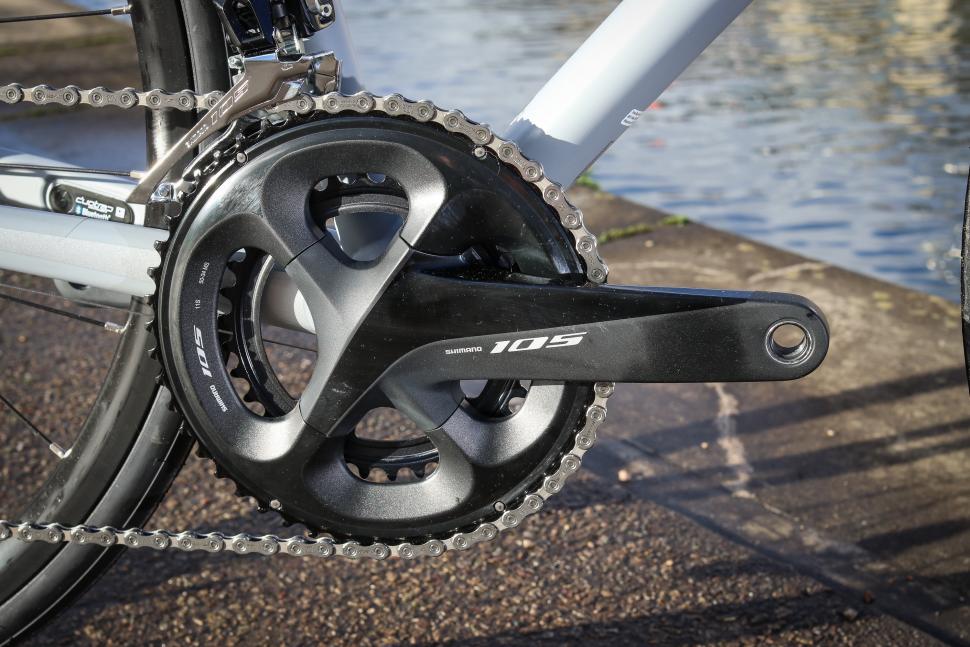


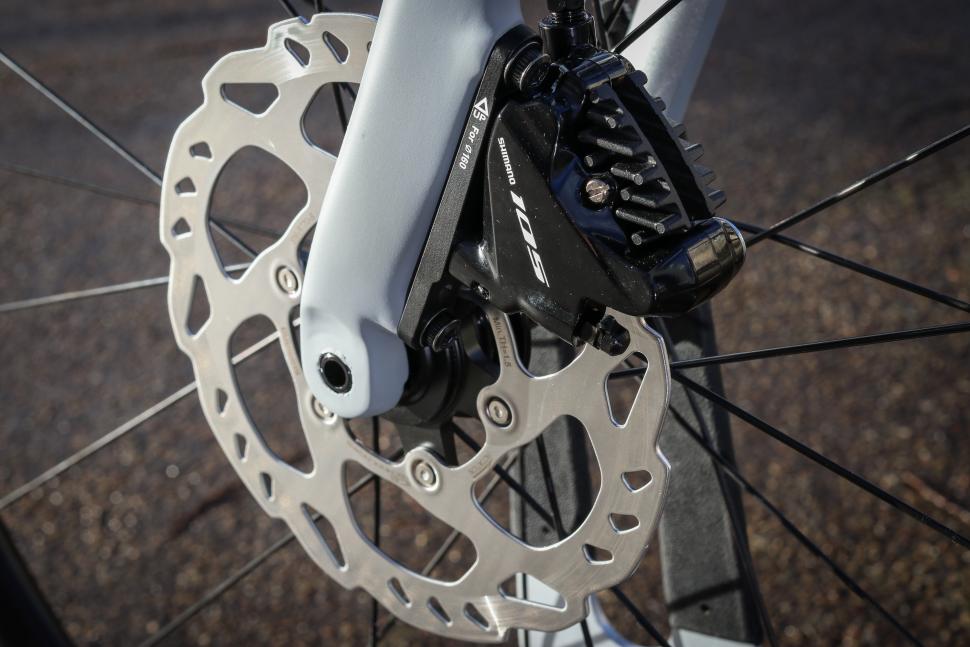
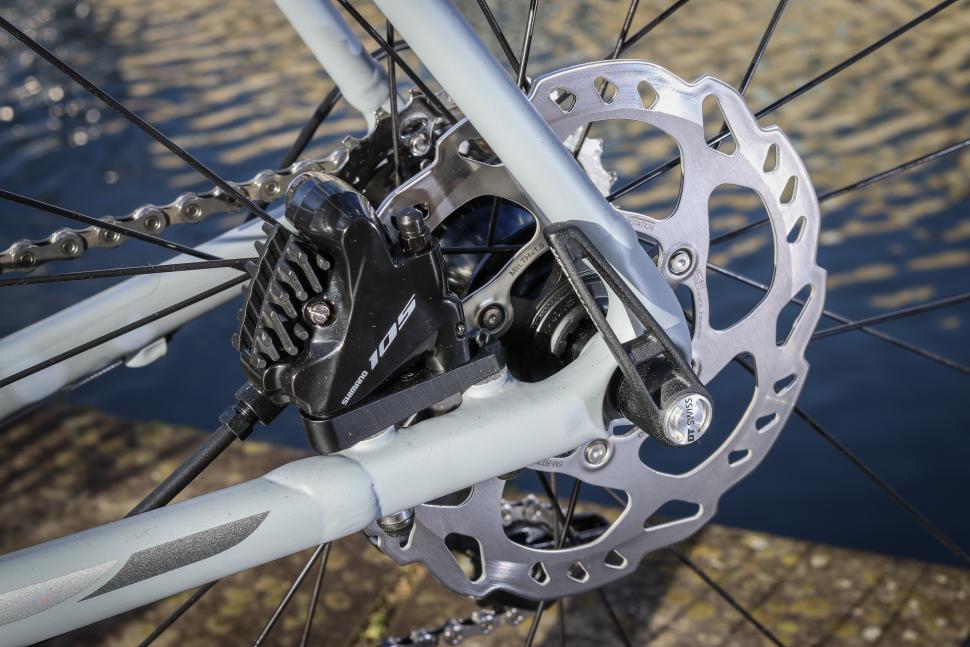
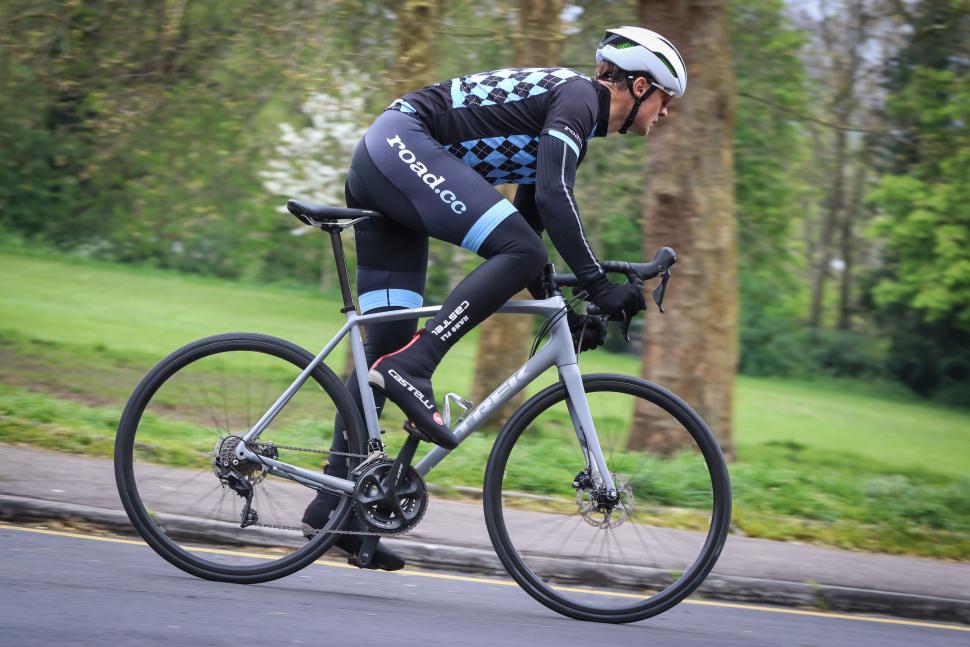


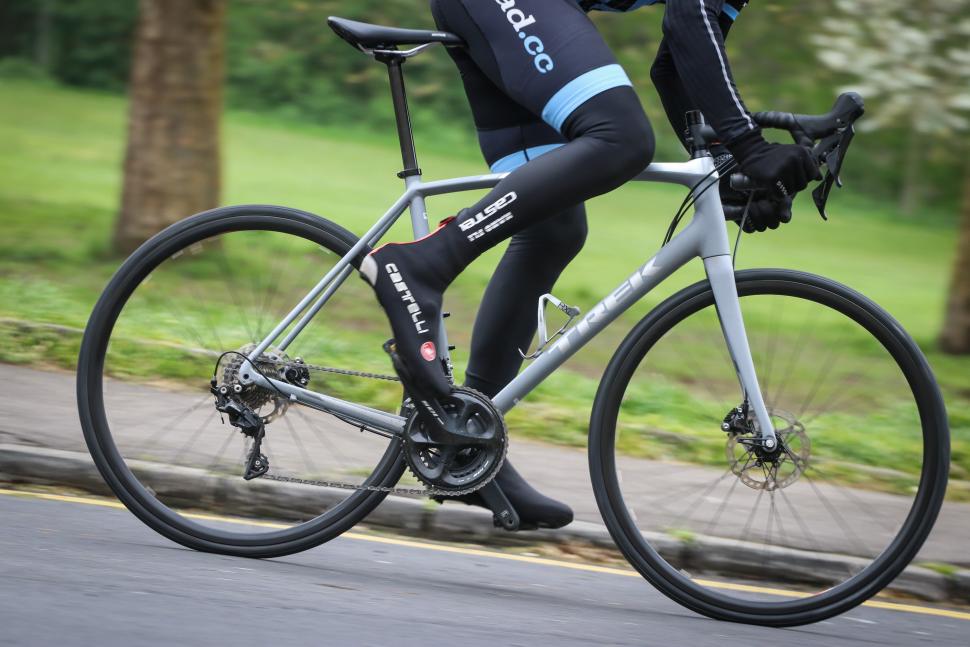


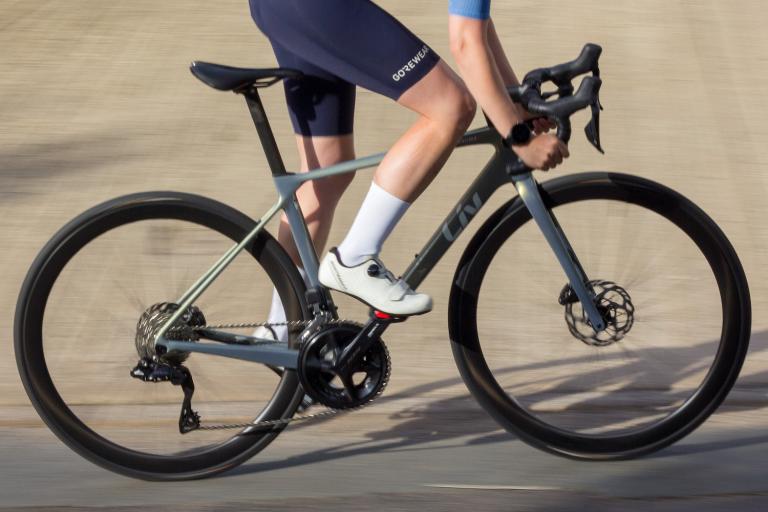
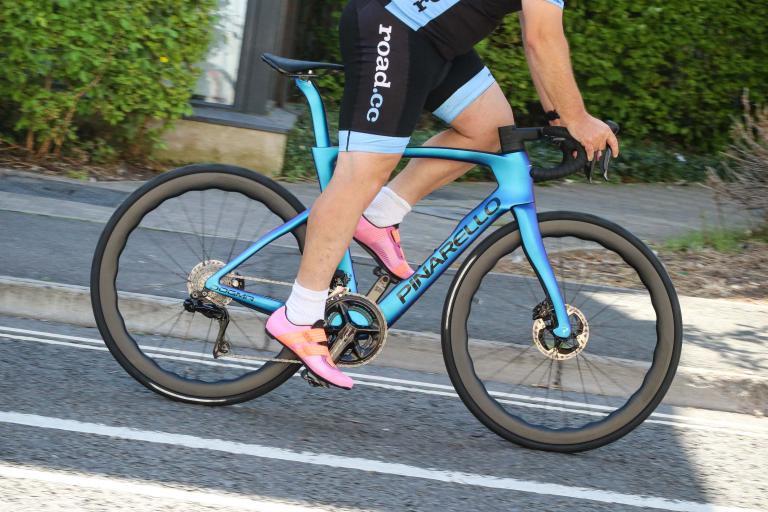
Add new comment
9 comments
As per previous comments, why would you put mudguard mounts on a lightweight climbing/race bike? Trek have the Domane for mudguards.
I have the 2017 rim brake model and its light, comfortable and fairly responsive. Probably not as sharp as alu Giant TCR SLR and Kinesis Aithein that I have previously owned though.
I wonder how much rubbing discs as much as the weight dull the feel of disc bikes? It's just inevitable isn't it when clearances are so tight.
If we're talking half-decent hydraulic disc brakes, then you really shouldn't notice any difference at all. What occassional small contact you get is pretty much nudged out straight away - unless there's something really out of wack. If it's mechanical then you can get a pad stuck against a disc, like a brake block against a rim, and it's a drag in all meanings and will likewise feel like crap - but more faff to sort.
My summer bike is 1.2kg lighter than my winter bike, combination of mudguards and cheaper components (105 vs Ultegra).
Summer bike rides noticeably lighter, encourages silly efforts in climbs and sprints and is just more fun in general.
I wouldn't be discounting that sort of weight difference casually, would REALLY have to want discs (irrelevant side note, was amazed at the extra power of the Ultegra brakes vs. the cheap Tektros on the winter bike...)
There isn't that sort of weight difference though, as far as published weights go - it's a couple of hundred grammes.
I’m sure it’s a great feeling bike, but 1800 is a lot these days for an aluminium bike. At this price range most people will be demanding carbon.
And at 9.2 kgs it is very heavy for nearly 2 grand. Disks at blame there, improvements we’re sold by marketing don’t always add up. I’d challenge at 1.3kg against a rim model is massive that even ordinary people would notice. I don’t know why anyone would buy this.
Quick look around at the weights seem to indicate there's something a bit odd, e.g. comparing a 2019 Emonda ALR 5 and a 2019 Emonda ALR 5 Disc shows a 110g difference in the links below (8.75 vs 8.86kg in a 56).
https://www.leisurelakesbikes.com/310176/products/trek-emonda-alr-5-road...
https://www.leisurelakesbikes.com/310178/products/trek-emonda-alr-5-disc...
That's more towards what i'd expect the differences to be (i'd have guessed 2/300g tops) but safe to say it's probably the 'disks at blame there' - to be frank though, i'd be fucked if I could seriously say i'd be able to tell the difference side-by-side and nowhere near 1.3kg if we're comparing apples with apples.
Edit : CyclingWeekly had a black ALR 4 with 105 (so ALR 5 basically) reviewed at the end of last year which weighed in at 7.8kg for a 52.
Ideal winter bike. Just get myself some compatible mudguards and we're away.
Oh....
I was thinking exactly the same thing.
That's a bit like thinking I'll buy a mini convertible and stick a roof rack on it.
The ALR is an alloy version of a climbing bike. That's what it's for. There are plenty of alloy disc equipped bikes you can stick guards and panniers to.
I have the non-disc version and unless they've updated the bike since two years ago I'd disagree with the comment on this being a 'planted' bike. The lightweight alloy frame has flex in it and you can feel it when descending and even during normal riding. It's not like a Canyon Endurace or CAAD 12 in this regard. The latter is the better bike, the Endurace is more solid but that leads to a harder ride. It's light though, and comfortable.